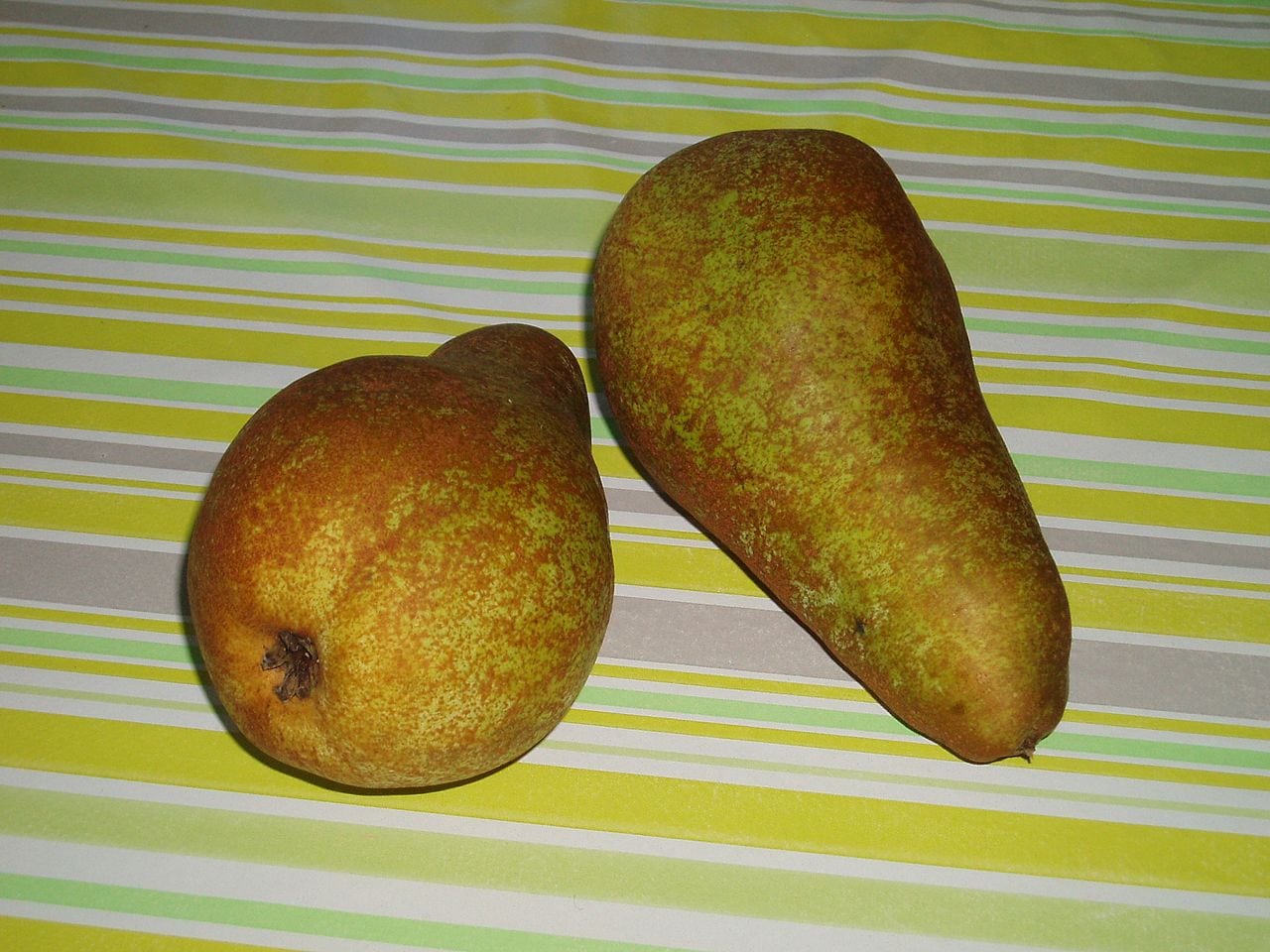Concorde Pear Info – How To Grow Concorde Pear Trees


Firm and crisp, Concorde pears are juicy and delicious off the tree, but the flavor becomes even more distinctive with ripeness. These luscious pears are suitable for nearly every purpose – ideal for eating fresh out of hand or mixing into fresh fruit salads, or they can easily be canned or baked. Concorde pears store well and generally last about five months. Read on for more Concorde pear info, and learn the basics of growing Concorde pears.
Concorde Pear Information
Concorde pears, a fairly new variety, hales from the U.K. The trees are a cross between Comice and Conference pears, with some of the best features of each. These attractive pears display a rounded bottom and a long neck. The yellow-green skin sometimes shows a hint of golden russet.
How to Grow Concorde Pears
Plant Concorde trees anytime the ground is workable. Be sure to allow 12 to 15 feet (3-4 m.) from water and sewer pipes to avoid problems in the future. The same goes for sidewalks and patios. Like all pear trees, Concordes require rich, well-drained soil. Dig in a generous amount of manure, sand, compost, or peat to improve drainage. Ensure that Concorde pear trees receive at least six to nine hours of sunlight per day. Concorde pears are self-fertile so they don’t require a pollinator. However, a pear tree nearby ensures a larger harvest and better-quality fruit. Good candidates include:
- Bosc
- Comice
- Moonglow
- Williams
- Gorham
Harvest time for Concorde pears is generally late September into October. Harvest Concorde pears when they’re still slightly under-ripe.
Care of Concorde Pear Trees
Water the pear trees deeply at planting time. Thereafter, water well whenever the soil feels dry. After the first few years, supplemental water is generally required only during extremely dry spells. Feed your pear trees every spring, beginning when the tree begins bearing fruit – generally when the trees are four to six years old. Use a small amount of an all-purpose fertilizer or a product formulated specifically for fruit trees. (Concorde pear trees need very little supplemental fertilizer if your soil is highly fertile.) Concorde pears generally don’t require a lot of pruning, but if necessary, you can tidy up the tree before new growth appears in late winter or early spring. Thin the canopy to improve air circulation. Remove dead and damaged growth, or branches that rub or cross other branches. Also, remove wayward growth and “water sprouts” as they appear. Thin young trees when the pears are smaller than a dime, as Concorde pear trees are heavy bearers that often produce more fruit than the branches can support without breaking. Thinning pears also produces larger fruit. Remove dead leaves and other plant debris under the trees every spring. Sanitation helps control diseases and pests that may have overwintered in the soil.
Sign up for the Gardening Know How newsletter today and receive a free copy of our e-book "How to Grow Delicious Tomatoes".

A Credentialed Garden Writer, Mary H. Dyer was with Gardening Know How in the very beginning, publishing articles as early as 2007.